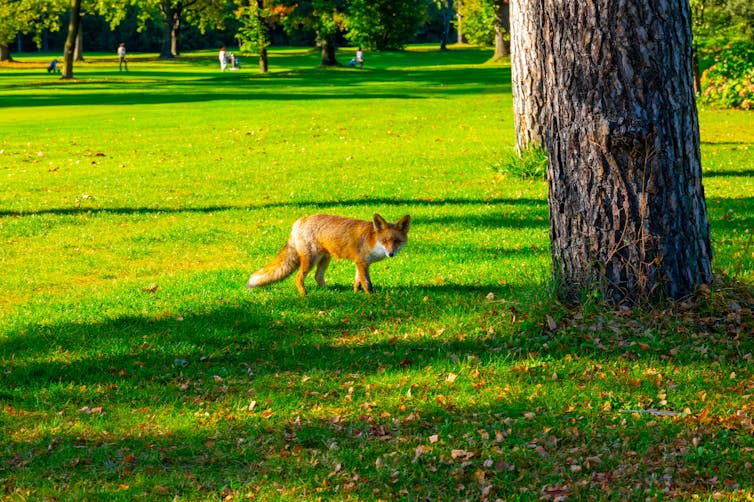An Arizona golf course, so picture-perfect it was described as “the Imax of golf”, was wantonly trashed by intruders in the autumn of 2023. But no, this was not Just Stop Oil back for another round, nor the result of a disgruntled golfer. In fact, it was the work of a squadron of javelinas.
Javelinas (or peccaries) are small but feisty relatives of the domesticated pig, found across the southern US and into South America. Like many of their relations, javelinas are bright, enterprising and with an extensive palate that includes everything from tubers to roadkill, though cacti are a firm favourite.
These tough little pigs are not the only porcine terrors of the fairway, though. In New Zealand, feral pigs have grubbed up a course; in southern China, wild boar damage has seen hunters called in; and in South Africa, warthogs do the pitch invading.
These pig invaders hint at a role for golf in nature conservation that is not immediately obvious. A study of wild boar in Spain revealed that they raided golf courses less often during the COVID lockdown, when hunting was curtailed.
The courses offered a refuge from hunting which the pigs did not need during lockdowns. What else might they offer wildlife?
The bogey of management
When nestled within farmland or suburbs, golf courses can support markedly more biodiversity than the surrounding landscapes, hosting inventories of wildlife that include birds, insects and amphibians.
Golf courses might provide all sorts of benefits to species. Those grassy expanses could offer a cooling oasis amid overheated concrete sprawl. Wildflower meadows that benefit bees and other pollinators can also lure bats looking for insects to eat. But these benefits depend on good management to create a mix of habitats, including flower-filled rough grass, scrub and woodland.
Wildlife-friendly golf course management can even benefit the game itself. The same flowers that entice pollinators attract natural enemies of turf-trashing caterpillars like the fall armyworm, reducing the impact of this pest. Water hazards that operate as wildlife ponds might also be a boon, but careless planting of showy plant varieties can push native flora out.
There are sterner environmental challenges with running a golf course, though. Irrigation is a major drain on water – especially for courses in arid regions. Water draining from these courses may be polluted with pesticides or nutrients that alter the algae in adjacent streams.

Golf courses can be hard to justify in regions where water is scarce. Dave Morgan/Shutterstock
Golfers themselves could be a large and generally affluent body of allies for nature conservation – although a nationwide survey conducted in France in 2021 suggested involvement in conservation is not high on many golfers’ agendas. Rampaging javelinas probably do not help.
French golfers have it easy compared with some of the creatures roaming the fairways in other countries. Florida’s golfers, for example, would do well to keep an eye out for alligators. But the wild can be a selling point for golf courses too. Some African courses even advertise their wildlife encounters.
The Arizona course staff were understandably horrified by the damage done, but the javelinas have their fans too. Their media allies eulogise the javelinas’ cunning at exploiting our world, their complex family lives which may include mourning their dead, and their attempts at rewilding an alien habitat.
Rewild the fairway
The potential for letting nature take back golf courses may also be surprisingly high.
In the US, the total number of golf courses is declining, with more closures than openings since 2006 – many of them abandoned with no new purpose in mind. While some may be reused for housing, there are other possibilities, such as parks. Reversing the drainage from derelict courses could create new wetland habitats capable of stalling floods during heavy rainfall.
However, abandoning courses may not be enough to benefit nature on its own. The hangover from past management, such as high nutrient levels in the soil, can linger for years and allow a small number of hyper-competitive species to dominate.
Projects to reverse this damage and rewild golf courses are springing up in England, the US and Australia. In all these cases, conservationists are planting native species, diversifying habitats and preventing water from draining. These interventions raise a thorny issue for conservationists – does it count as rewilding if people are doing so much of the work?

Golf courses lure wildlife looking for food and shelter. Mats Silvan/Shutterstock
Perhaps we should look to the javelinas, an example of wildlife taking the initiative, for an answer. The usefulness of pigs and their kin for grubbing up the land is widely recognised in rewilding projects. They reset the stage, bringing static landscapes back to life. On a farm that was returned to nature in Sussex, England, the rooting around of pigs has been credited with opening up bare ground and allowing annual weeds to flourish, whose seeds then sustain a remarkable number of endangered turtle doves.
It has become fashionable among opponents of rewilding to criticise this approach to nature conservation for taking land out of food production. But the use of agriculturally productive land for golf courses goes unremarked.
Don’t blame the javelinas for taking matters into their own trotters.



 GesiaPlatform Launches Carbon-Neutral Lifestyle App ‘Net Zero Heroes’
GesiaPlatform Launches Carbon-Neutral Lifestyle App ‘Net Zero Heroes’  How to create a thriving forest, not box-checking ‘tree cover’
How to create a thriving forest, not box-checking ‘tree cover’  Thousands of satellites are due to burn up in the atmosphere every year – damaging the ozone layer and changing the climate
Thousands of satellites are due to burn up in the atmosphere every year – damaging the ozone layer and changing the climate  Rise of the Zombie Bugs takes readers on a jaw-dropping tour of the parasite world
Rise of the Zombie Bugs takes readers on a jaw-dropping tour of the parasite world  Pepe Marti’s Epic F2 Win: ‘Game-Changer’ in Championship Battle as Abbi Pulling Steals F1 Academy Spotlight
Pepe Marti’s Epic F2 Win: ‘Game-Changer’ in Championship Battle as Abbi Pulling Steals F1 Academy Spotlight  Drug pollution in water is making salmon take more risks – new research
Drug pollution in water is making salmon take more risks – new research  Native American Groups Slam Trump’s Call to Restore Redskins Name
Native American Groups Slam Trump’s Call to Restore Redskins Name  Lake beds are rich environmental records — studying them reveals much about a place’s history
Lake beds are rich environmental records — studying them reveals much about a place’s history  What’s so special about Ukraine’s minerals? A geologist explains
What’s so special about Ukraine’s minerals? A geologist explains  Why is soccer fandom so linked to violence?
Why is soccer fandom so linked to violence?  Australia’s major sports codes are considered not-for-profits – is it time for them to pay up?
Australia’s major sports codes are considered not-for-profits – is it time for them to pay up?  Parasites are ecological dark matter – and they need protecting
Parasites are ecological dark matter – and they need protecting  How did sport become so popular? The ancient history of a modern obsession
How did sport become so popular? The ancient history of a modern obsession  The UK is surprisingly short of water – but more reservoirs aren’t the answer
The UK is surprisingly short of water – but more reservoirs aren’t the answer  How is Antarctica melting, exactly? Crucial details are beginning to come into focus
How is Antarctica melting, exactly? Crucial details are beginning to come into focus  We combed through old botanical surveys to track how plants on Australia’s islands are changing
We combed through old botanical surveys to track how plants on Australia’s islands are changing 




























